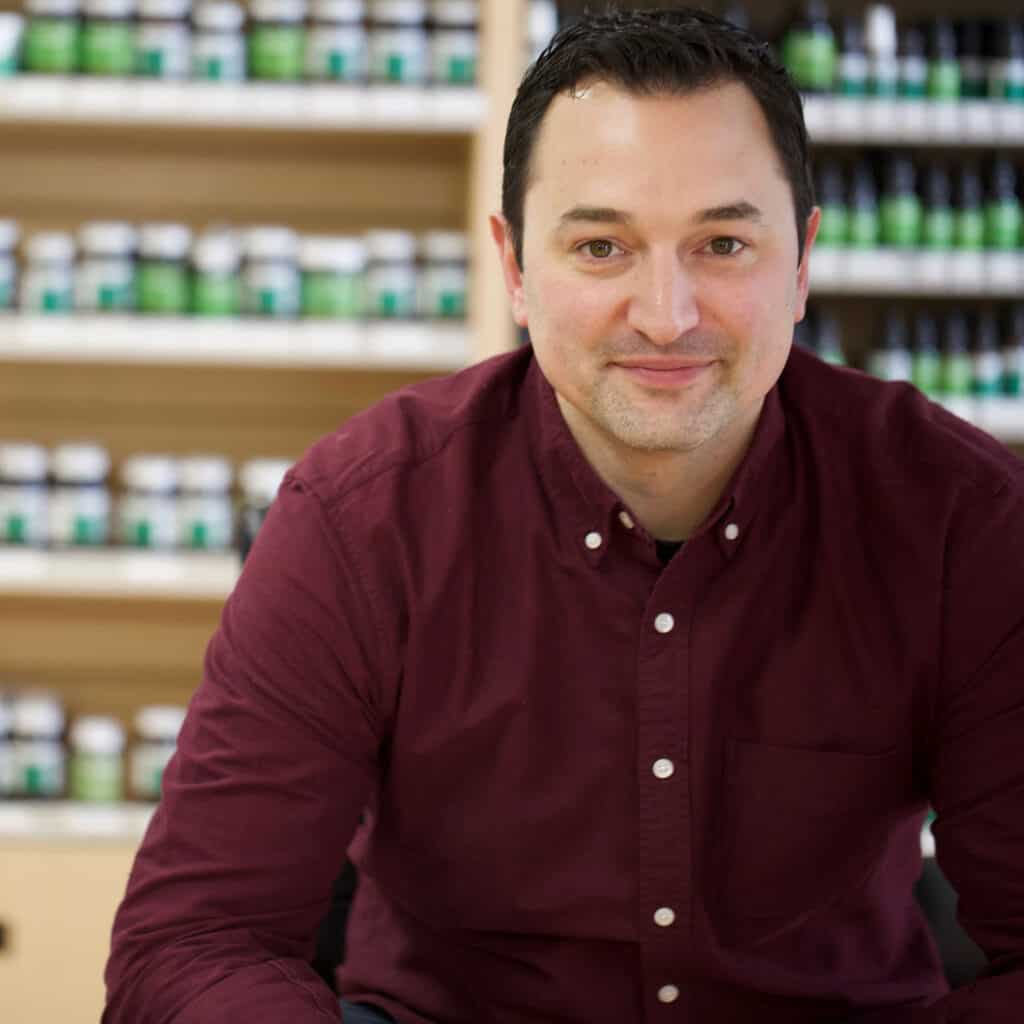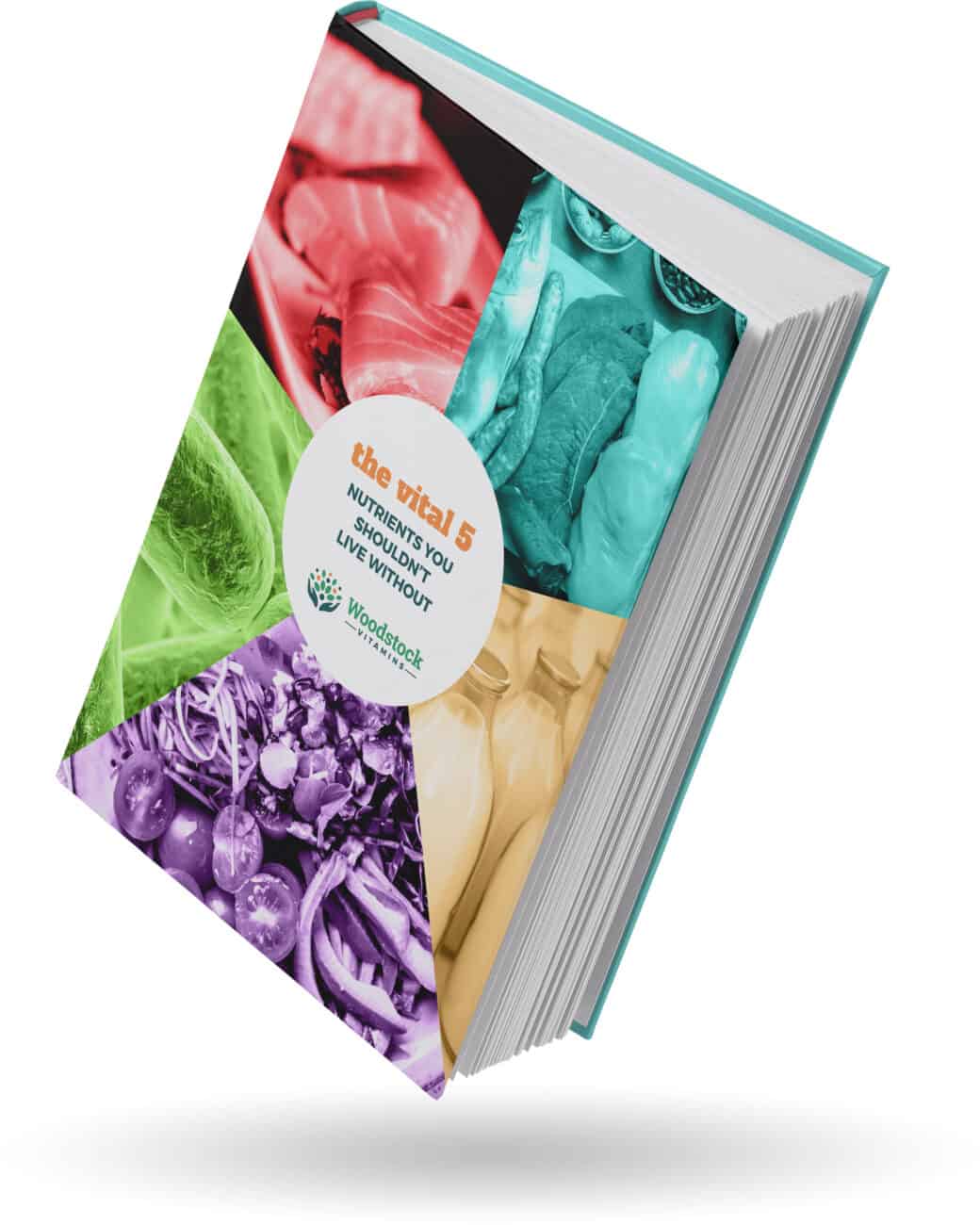Our ever-expanding knowledge of the human microbiome, pervasive gut problems, and the trendiness of supplements has brought probiotics to the top of almost all our minds. Well, just below CBD.
With this increased attention comes plenty of misinformation. Social media has made it way too easy for bad information to get to us, and “I’ve heard” has become the new standard for citation.
Probiotics are where the supplement industry shows its real colors. Not only do they have to make the products right, which they often don’t, the ingredients actually have to survive the gut, “stick”, reproduce, and colonize to have any impact whatsoever.
We’re out here trying to figure out which probiotic product is the best for us. We use lots of shortcuts, like looking for lots of strains and billions and billions of CFUs. The biggest indicator for quality, many people tell me when they ask about our probiotics, is that they are found in the refrigerator.
It would make sense then that we’d want to guarantee our probiotics survive the longest by ensuring they’re always refrigerated. As you can already guess, I’m here to blow a big old hole in that theory.
Temperature Sensitivity – What We’re Looking To Do
I’d like to introduce a new word into your vocabulary. It’s not made up like the name I’ve bequeathed myself with, “holistic pharmacist.” It’s temperature-sensitive.
Very basic concept: some probiotics require refrigeration. They are, then, temperature-sensitive.
Probiotics are bacteria. They are delicate. They have to remain viable. Staying cold is one way for them to do that. If they fall outside the range of acceptable temperature, they will degrade faster. By the time you get a probiotic that didn’t have its temperature controlled, there’d be nothing left to help your gut gone bad.
This is where the idea of refrigeration becomes instilled in us. Many “gurus” parrot this message. Now, our knee-jerk reaction is “all probiotics have to be found in the refrigerator.”
Let’s break apart this shortcut and get into the nuance when we think of probiotics. What I want you to think is this, “What does the entire lifecycle of a probiotic look like, and how do I ensure it was cold for the entire time?”
This is called the “cold chain.”
The Probiotic Cold Chain
I heard that Fleetwood Mac originally wrote their song “The Chain” because Mick was tired of getting bad probiotics for his bloating.
If probiotics have to be kept cold, we can’t take a hyper-focused view and worry JUST about whether or not they were in the fridge when we bought them. The reality is, that many probiotics are refrigerated when they arrive, but they haven’t been kept cold for much more during their lifecycle.
To benefit most from temperature-sensitive probiotics, we have to be guaranteed that a product that requires refrigeration was cold all the time.
This means – deep breath – the raw materials of the strains themselves were grown cold, then transported to the manufacturer cold, where they were stored cold, and the product was made cold (including heat from friction from all the machinery), then the product was stored cold, then went to their shipping/distribution and kept cold, then shipped completely cold to vendors, arriving cold, and promptly being put into the refrigerator.
Dirty secret time: this doesn’t happen. Oftentimes, temperature-sensitive probiotics spend most of their life out of the cold chain. Just because you bought a probiotic in the fridge, doesn’t mean the manufacturer or retailer did a good job ensuring the cold chain was intact.
This doesn’t happen at the local level (i.e. your “health food store” doesn’t consider these things) or at the national level. ConsumerLab.com found in 2009 that 85% of probiotics didn’t contain enough of the labeled strains, and they admit the numbers are getting better, I still call B.S. I don’t think companies are being better at maintaining the cold chain, but instead are using strains that don’t require refrigeration. More on that later…
Can we make a Snicker’s bar analogy? No one really takes the time to worry about the temperature stability of a Snicker’s bar after buying it, but we would NEVER leave it sitting on our car dashboard in the summer. That’s just chocolate, nuts, and addicting chemicals, not a living bacteria.
Now, we ourselves created a monster when we taught people this early on. If our products were warm for even moments or hours, people were demanding full refunds. The cold chain is important in many cases, but there’s even more nuance.
We have to look at the big picture. There’s no need to be obsessively vigilant. If your probiotic is warm for an hour or two (or even a day or two), you should be fine if the cold chain is maintained otherwise. All temperature-sensitive products should have some tolerance for being out of the desired range for short durations. This is called an “excursion” as if they’re going to someplace warm to dip their feet in the ocean or go zip-lining.
A few days out of the cold chain is typically fine, as long as the manufacturer has tested for these scenarios. One of our temperature-sensitive strains adds extra bacteria to ensure breaks in the chain won’t degrade the product below labeled amounts. Another tests a set of products that have been shipped out and returned to guarantee their expiration dating.
Let’s think of other temperature-sensitive things. Vaccines, for one. Imagine for a moment that vaccines were treated as some manufacturers and retailers treat probiotics. We’d be in trouble! Be ready to ask tough questions about the supply chain of probiotics. A full list of which will be provided at the end of this article!
In short, you’re not looking for probiotics to be refrigerated, you’re looking to ensure the cold chain has been kept intact.
Let’s complicate things a bit further: this cold chain thing only matters sometimes.
Strain-Specific Effects
All this information on how important it is to keep a probiotic cold and I’m about to switch it up! No, you don’t need to refrigerate ALL probiotics.
Here’s the truth about probiotics: probiotics only need to have the cold chain maintained if that is a trait of the probiotic strain that is being used. Not too advanced of a concept, but it is an important point.
The “strain” of the probiotic is the very specific bacteria (or otherwise) that is being used in the product.
When choosing a probiotic, we should only buy those that are telling you the very specific strain that is being used. Let’s explain this one!
We’re used to seeing things like “Lactobacillus acidophilus” on a probiotic. Lactobacillus is the genus, acidophilus is the species. Seventh grade biology was fun, right?
The genus is like a car manufacturer. Let’s say Lactobacillus is the same as saying Honda. Now, Honda makes a bunch of stuff. Cars, trucks, lawnmowers. If you need a certain type of truck, it wouldn’t be beneficial for you to get a bunch of cars or pressure washers, no matter the name. So, any probiotic that says it contains “Lactobacillus species” is basically saying you’re getting all of Honda’s offerings. Because you’re not a supplement nerd, you may not realize that you’re getting mostly useless ingredients.
Most manufacturers will tell you that their product has billions of “Lactobacillus acidophilus.” Now, they’re at least telling you you’ll be getting JUST their cars.
The problem is, the benefits of probiotics are strain-specific. Meaning, you NEED the 2019 Honda Civic LX model in order to address your GI issues, as per the clinical research.
You want your probiotics to have 3 names. Lactobacillus acidophilus La-14, for example. Keep in mind some manufacturers are using fake strain names, but that’s a story for another blog.
Anyway. If we get better about selecting the right strains of probiotics, we’ll find temperature-sensitivity is a trait of the strain. La-14 does NOT require refrigeration. In fact, it’s quite stable at room temperature!
I hope to compile a list of common strains that require refrigeration soon. I’ll tell you a big one, off the top of my head. Bifidus infantis. It’s found in Align, made by Proctor and Gamble. That probiotic is temperature-sensitive, yet is sold across the country sitting on the shelf. Third-party analysis found that it had, at one point, less than 25% of the labeled amounts.
One last point: just because it may not require refrigeration, that doesn’t mean the probiotic is ok at extreme temperatures. Think of your temperature-stable probiotic like any living thing, like a beloved pet or one of those “children” things people speak of. A little warm is ok for a short burst, but keep it at a controlled room temperature for best results.
Probiotics – In Need of An “Easy Button”
Of all the supplements out there, there’s nothing quite as complicated as probiotics. We covered a lot in our first part of our Probiotic Buying Guide, and we have more to do on specifics.
The big problem with probiotics is our perception. Saying “Probiotics” is like saying “Herbs.” There are lots of plants that fit into herbs but they have very different effects. We have to stop thinking about “probiotics” as a universal, one size fits all thing. We must change our mindset!
We have to look for specific strains with clinical data supporting their use. Based on what strains we choose, then we can get a little picky about whether something needs to be refrigerated or not.
Here’s what our probiotic goals should be, especially as it pertains to temperature and refrigeration:
- Be aware of what strains are being used.
- Determine if those strains are temperature sensitive or not.
- Ask tough questions to find the truth about whether or not the cold chain has been maintained, if it is required.
I’m asking you to be a “pest” of sorts. Here are a couple of questions to ask:
- “What do you do to guarantee the cold chain was maintained for these refrigerated probiotics?”
- “Do you have access to stability data? Have you looked at a recent lot’s stability data?” (Do you even know what you’re looking at? Ok don’t ask this one, it’s more pointed)
- “Do your probiotics have excursion stability data? What is the longest it can be out of the cold chain and still maintain potency?”
It’s a lot of work to get to the RIGHT probiotic product. It can be done, and we must not accept shortcuts when it comes to quality.
Before we close, time for a plug of our stuff! We try to make it easy with Probiotic Complete. It’s 4 of the most studied strains, all temperature stable, and with stability data to back it up. An added benefit, we have special blister packs that protect it from light and moisture.
Just trying to keep it real…

Neal Smoller, PharmD
Owner, Pharmacist, Big Mouth



